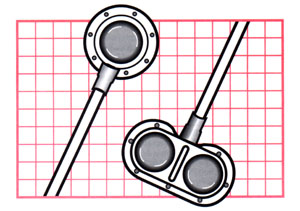| What is it? Wilms' tumour is a cancer of the kidney which develops in children of all ages, but the majority are under 5 years old. In most cases only one kidney has cancer (unilateral-Wilms' Tumour); but in some cases both kidneys are affected (bilateral-Wilms' tumour). (click on image to see larger version)
What are the chances that my child will develop Wilms tumor? The odds of getting Wilm's Tumor is 1 in 10,000. Based on the data presently available, the risk of occurrence of Wilms tumor in the offspring of a patient treated for a Wilms tumor is less than 2%. What is a VAD and how does it work?Implanted ports or reservoirs are special types of central venous access systems that are completely implanted under the skin. These ports are often referred to as TIVADs (totally implantable venous access devices) or VADs (venous access device). Implantable VADs consist of a reservoir, an inlet septum in the center of the reservoir, and an outlet catheter that is placed into a vein. The inlet septum is soft and pliable and designed to accept multiple punctures from special types of noncoring needles (e.g., Huber needles) while maintaining its leak-tight integrity. The needle is used to infuse medication into the reservoir. The catheter is anchored to muscle or subcutaneous tissue with sutures, and no part of the TIVAD system protrudes through the skin. TIVADs provide reliable vascular access for patients who require long-term drug or fluid therapy. They may be left in place for months at a time. Implanted ports are usually made of titanium or plastic. Patients are generally more comfortable and suffer fewer complications with TIVADs versus nonimplantable central lines. Physical activity is not limited, quality of life is improved, and maintenance of the system is relatively easy. Product names include BardPort, NorPort, Medtronic, MicroPort, Button Port, Q-Port, Hemo-Cath, Perm-a-Cath, Port-a-Cath, LifePort, and Infuse-A-Port. To insert a TIVAD, the surgeon creates a subcutaneous pocket to hold the port. The VAD is usually placed under the pectoral muscles or skin in the anterior chest below the clavicle. The catheter is then inserted into the desired vessel. The port and catheter are connected and the skin is then closed. The procedure is generally done under local anesthesia.  Luke has the Single BradPort (left)  This is roughly where it is placed under the skin Links:Personal Sites: |